Abstract
Three hundred volunteers were divided into two age groups, 14-30 years and 31-60 years. Each participant was immunized intramuscularly with a subunit, whole virus or absorbed whole virus vaccine, containing A/Bangkok/1/79 (H3N2), A/Brazil/11/78 (H1N1) and B/Singapore/222/79 influenza virus. Serum haemagglutination-inhibition (HI) antibody response, protection, and reactogenicity were studied after one and two doses of the vaccines. Primary immunization induced much higher percentages of HI antibody titres greater than or equal to 100 against all three vaccine viruses and much higher geometric mean titres (GMT) in volunteers with pre-immunization titres greater than or equal to 18 as compared to those with pre-immunization titres less than 18. Secondary immunization did not result in an increase of GMTs or antibody titres greater than or equal to 100 in volunteers with pre-immunization titres less than 18. On the whole, the response to the subunit vaccine was similar to that to the other two vaccines. To influenza B/Singapore/222/79 virus the response was lowest after administration of the whole virus vaccine in the age group 31-60 years. Over 50% of the HI titres greater than or equal to 100 found after immunization in the different vaccine and age groups were still present after one year. Serologically established infections during the winter months following immunization amounted to 15% in the subunit vaccine group, 6% in the whole virus vaccine group, and 10% in the adsorbed whole virus vaccine group. Local and systemic reactions to all three vaccines were mild in nature. Local reactions after primary immunization were much less frequent following administration of the subunit vaccine as compared to the other two vaccines, especially in the younger age group. In comparison to primary immunization, after booster immunization the incidence of local reactions was higher for the subunit vaccine and lower for the adsorbed whole virus vaccine. In the age group 14-30 years the incidence of local reactions after primary as well as booster immunization was much greater in females than in males, especially when the adsorbed whole virus vaccine was used.
Full text
PDF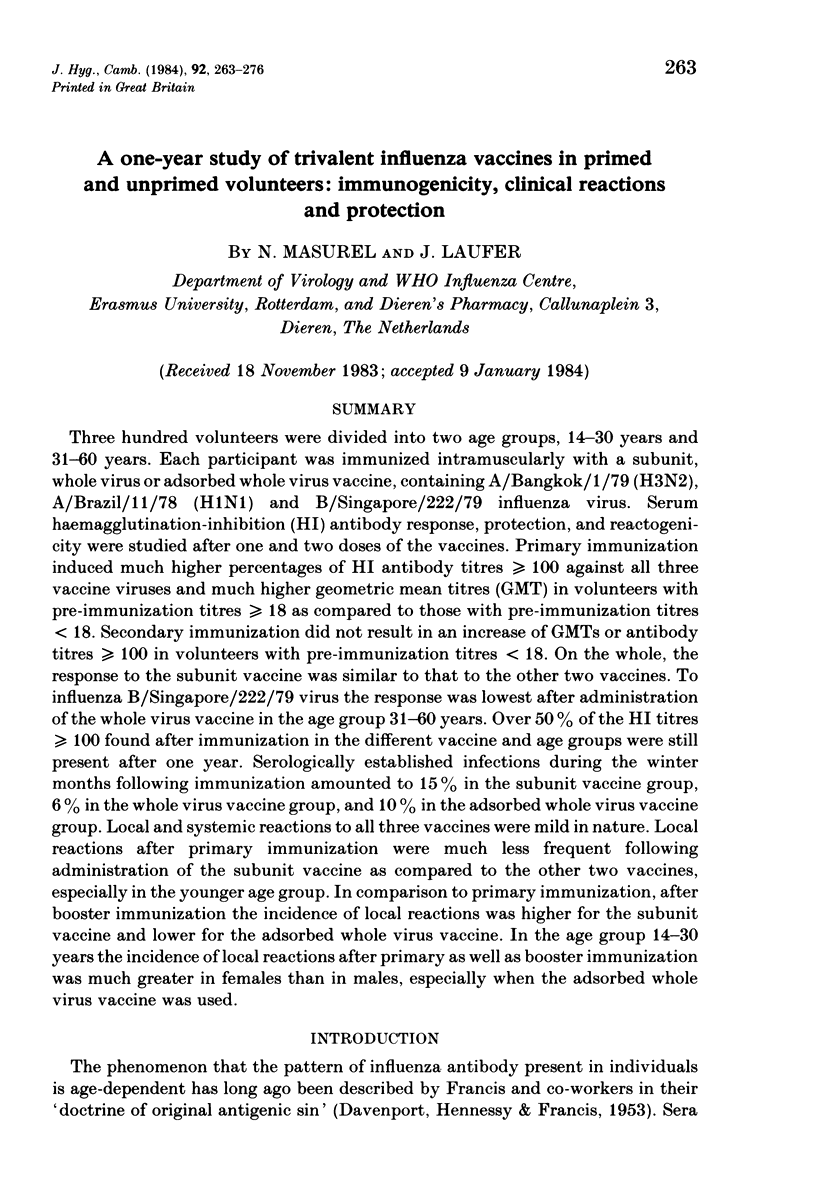
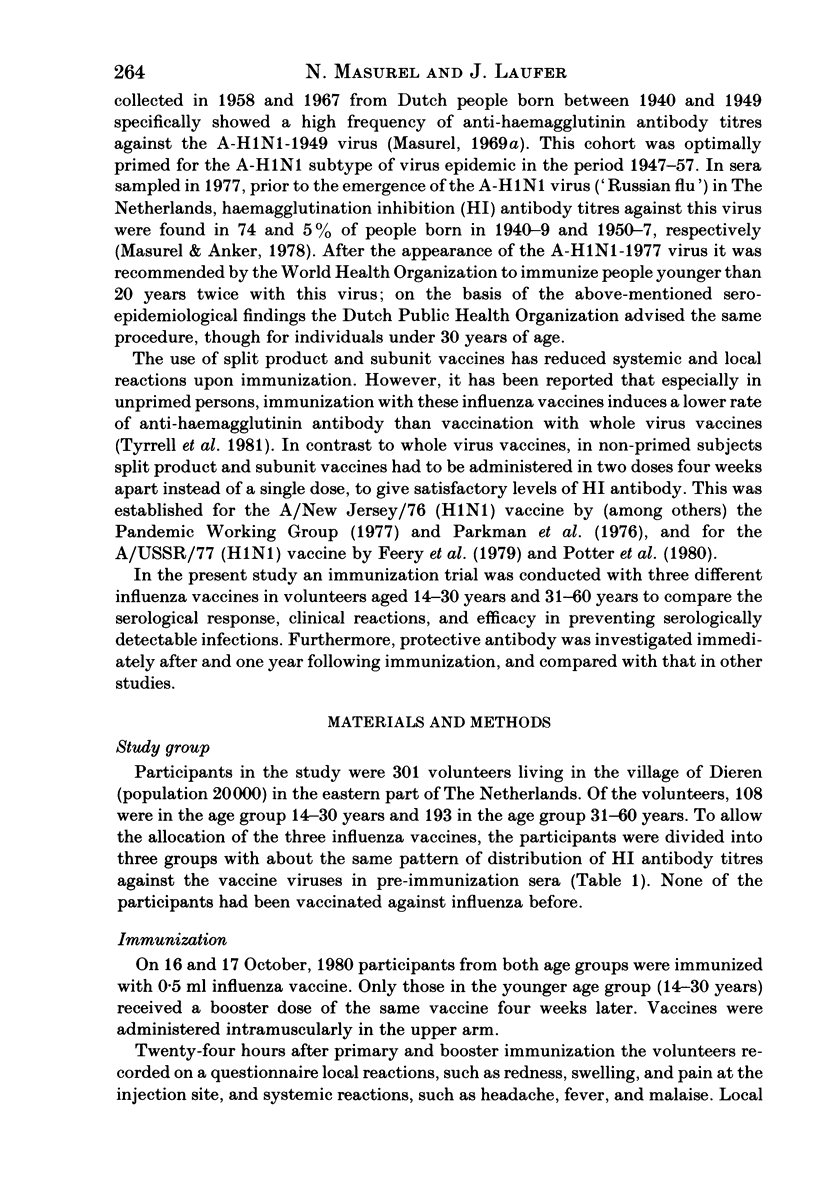
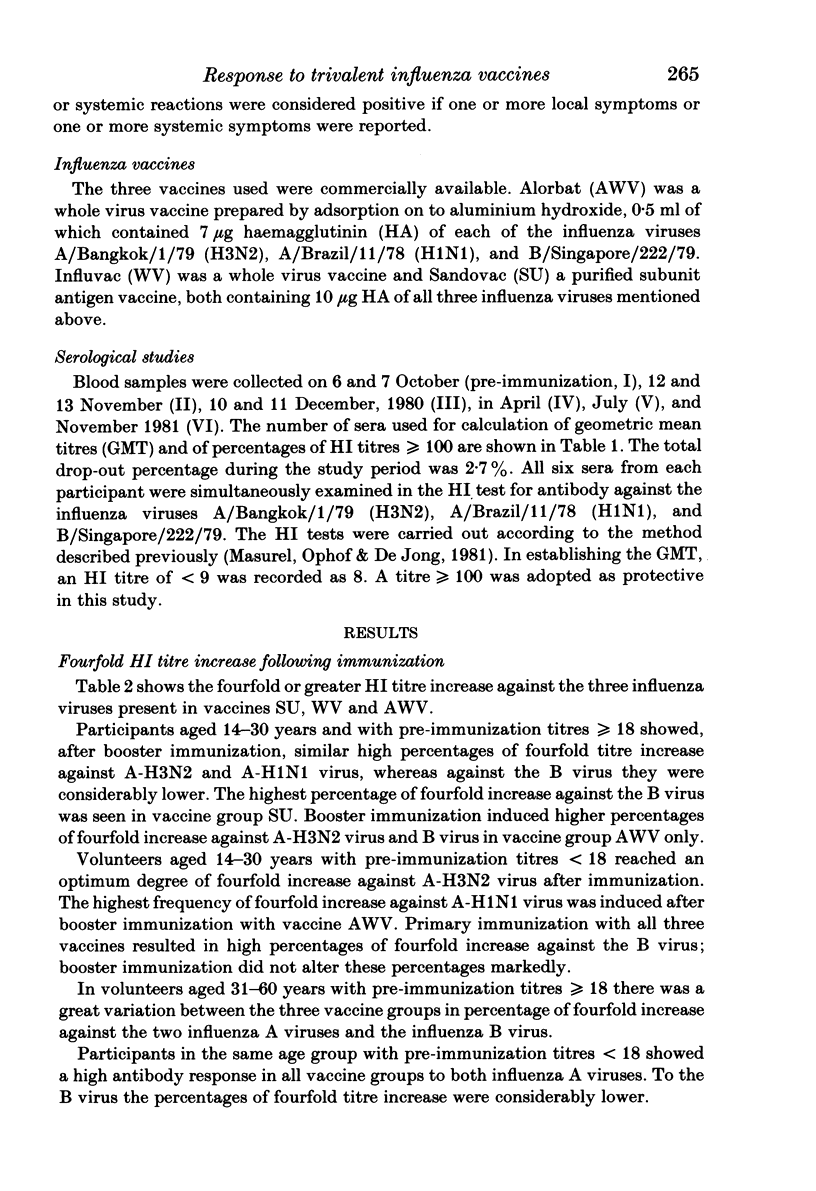
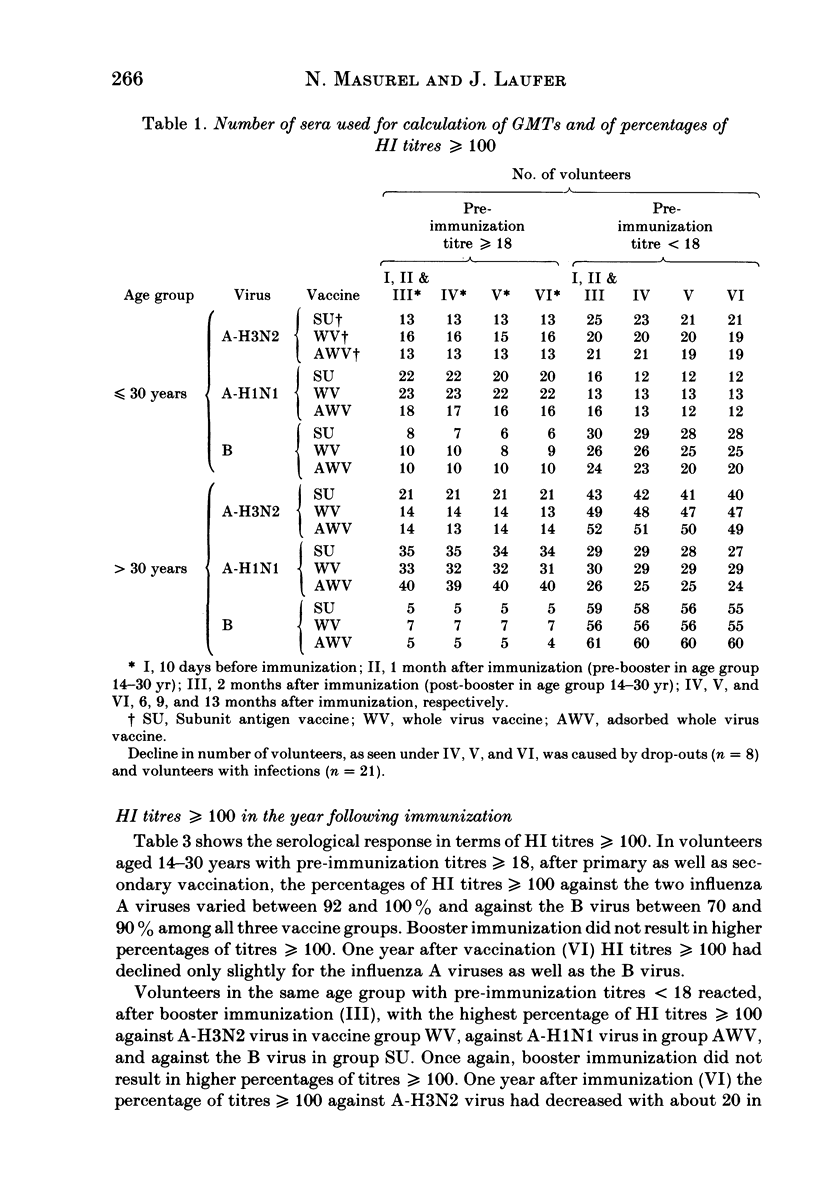
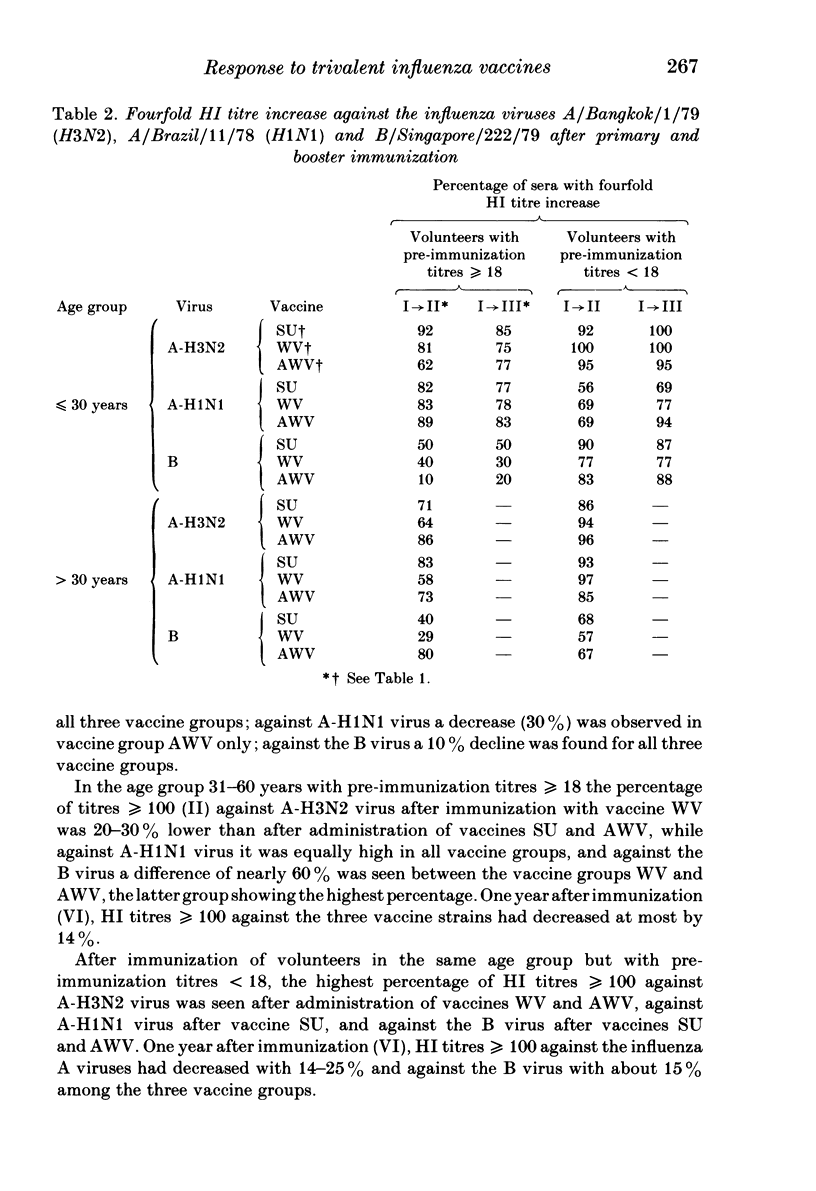
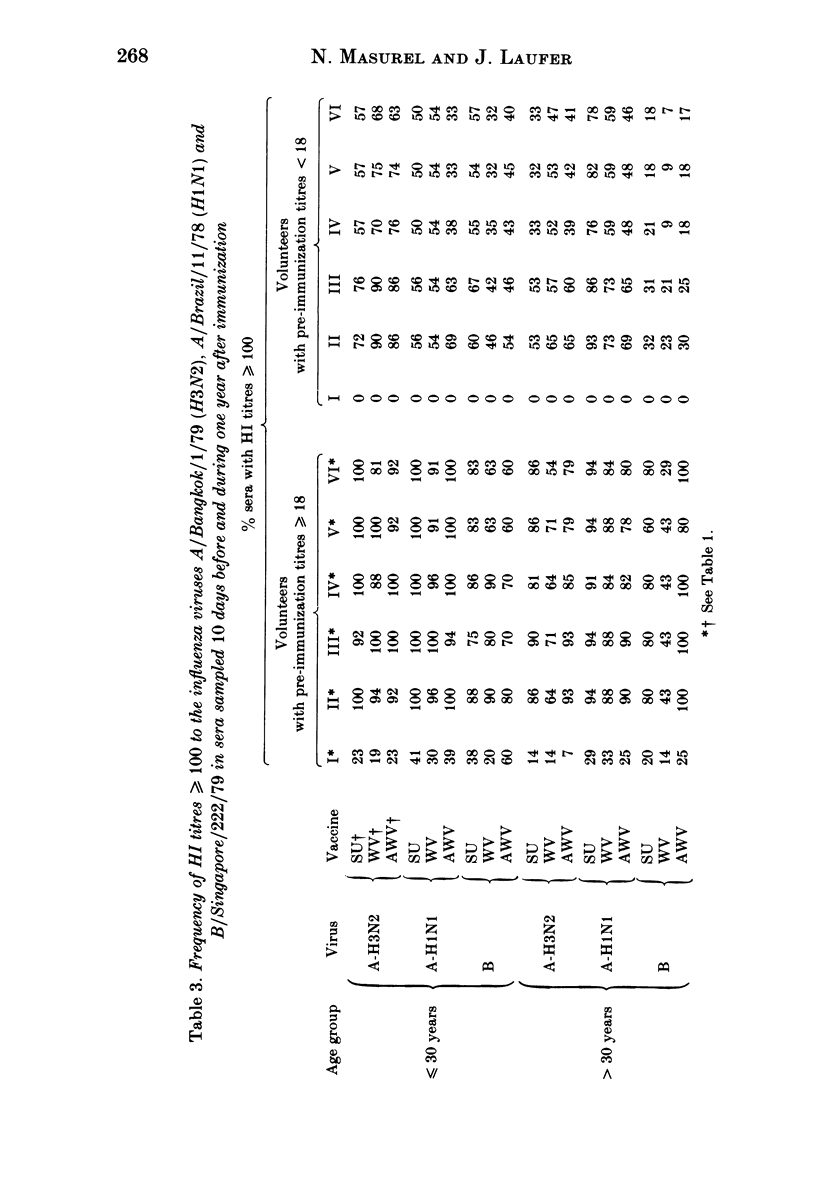
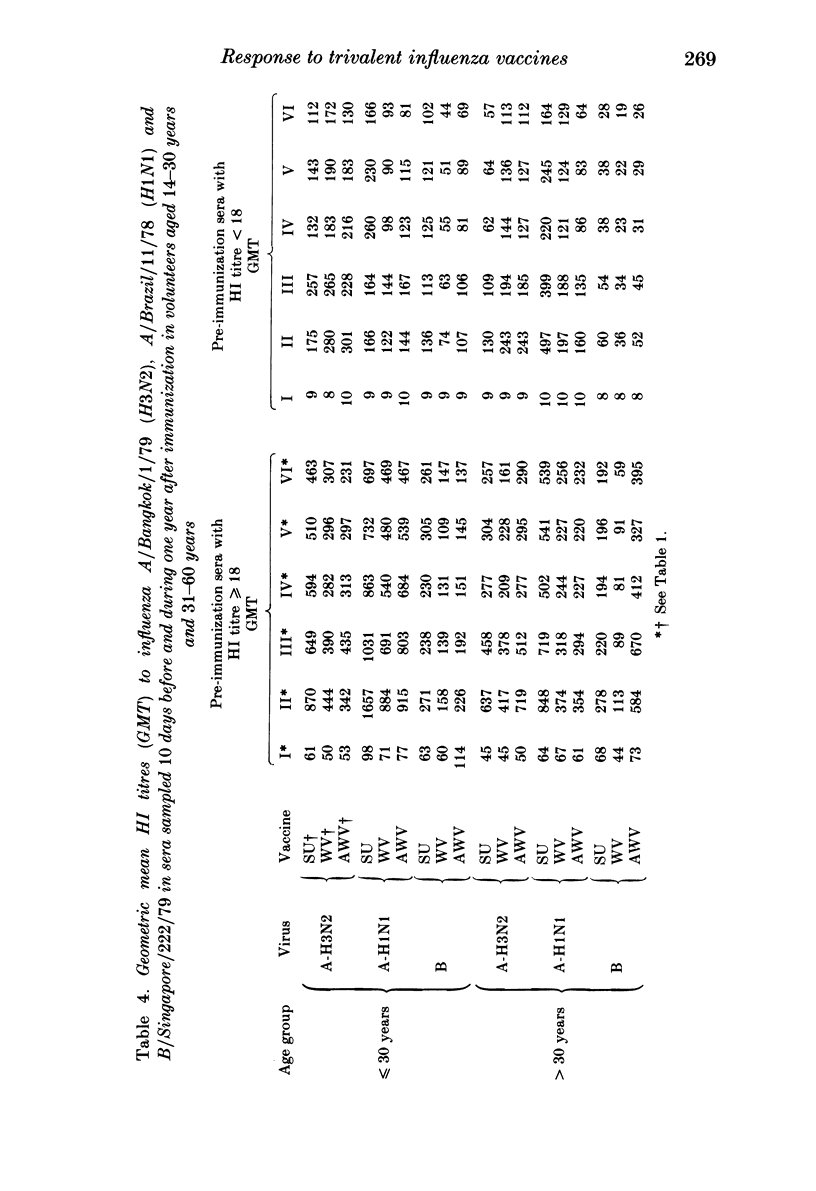
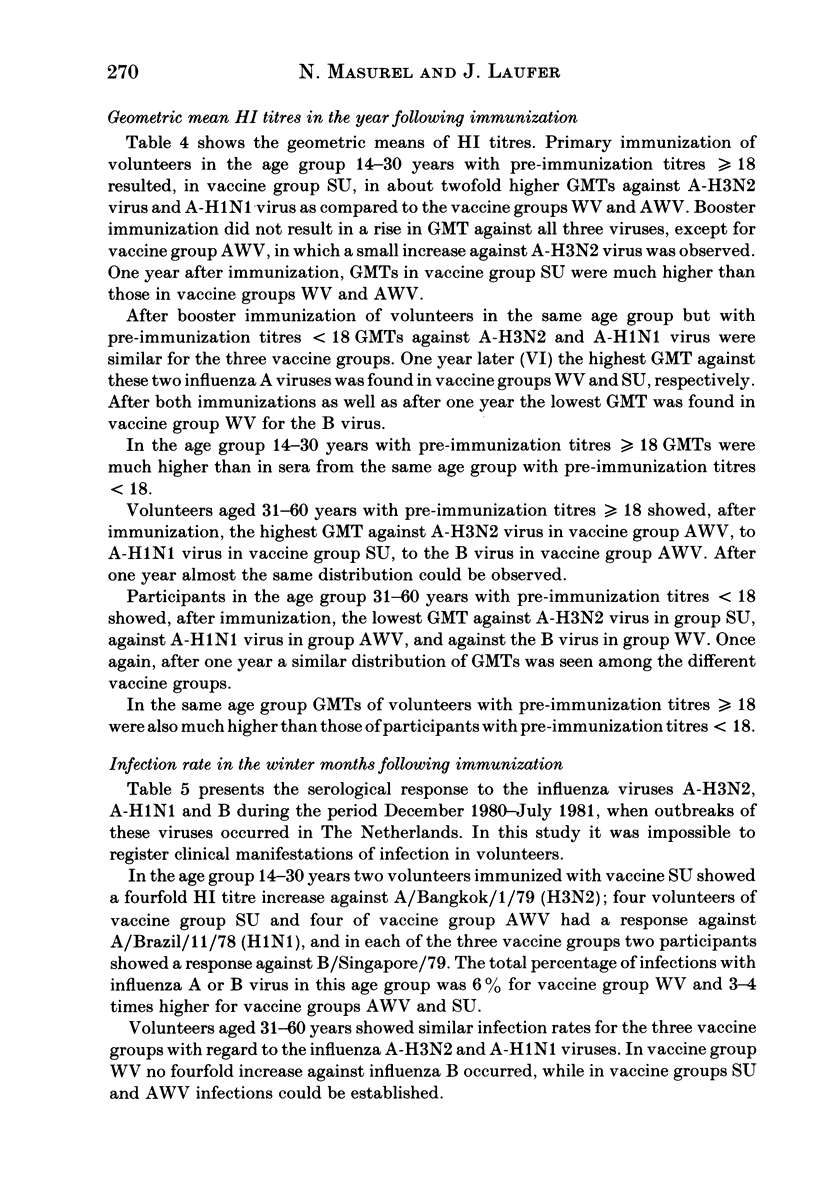
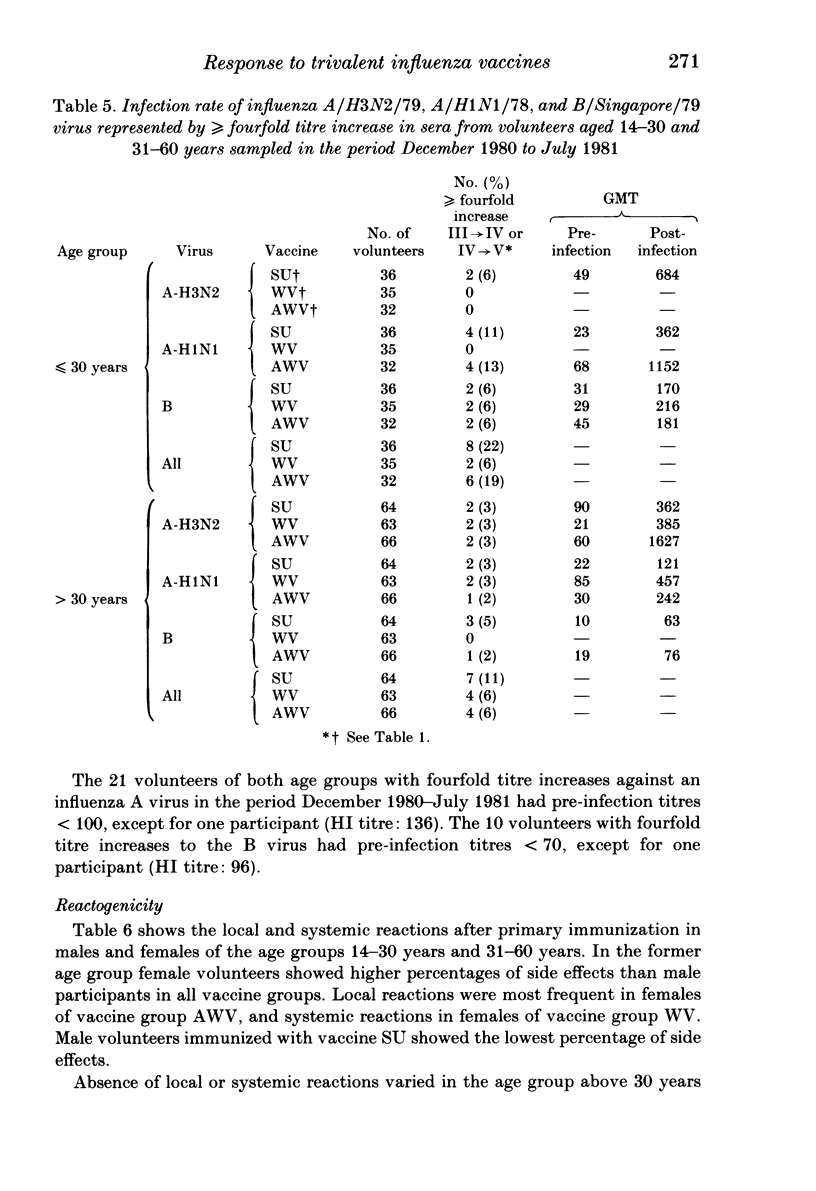
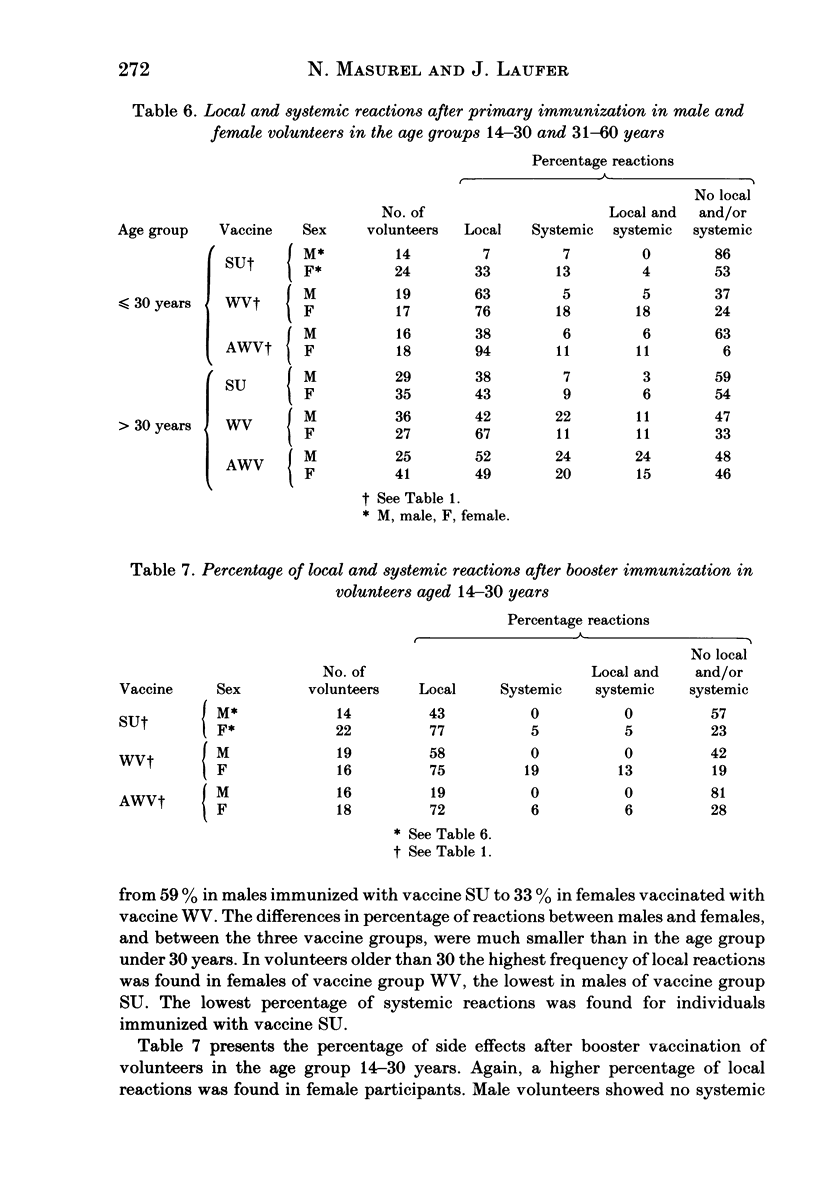
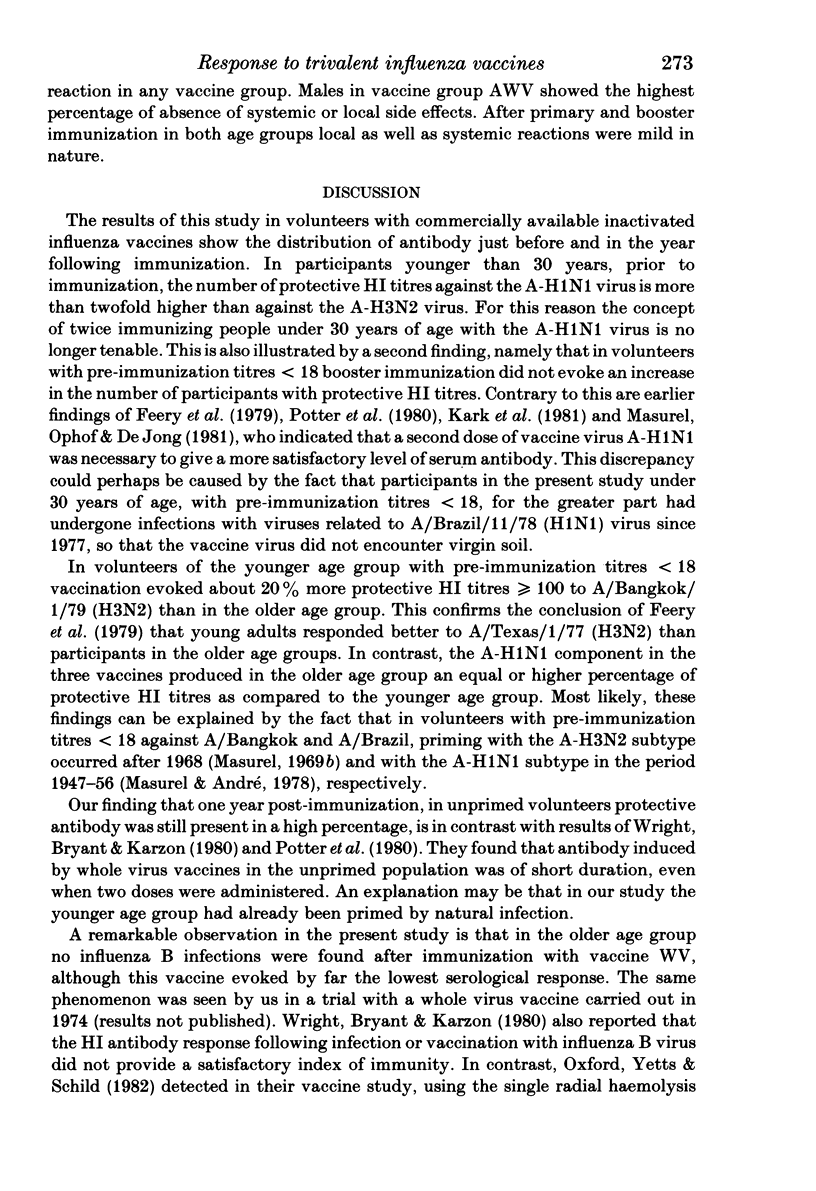
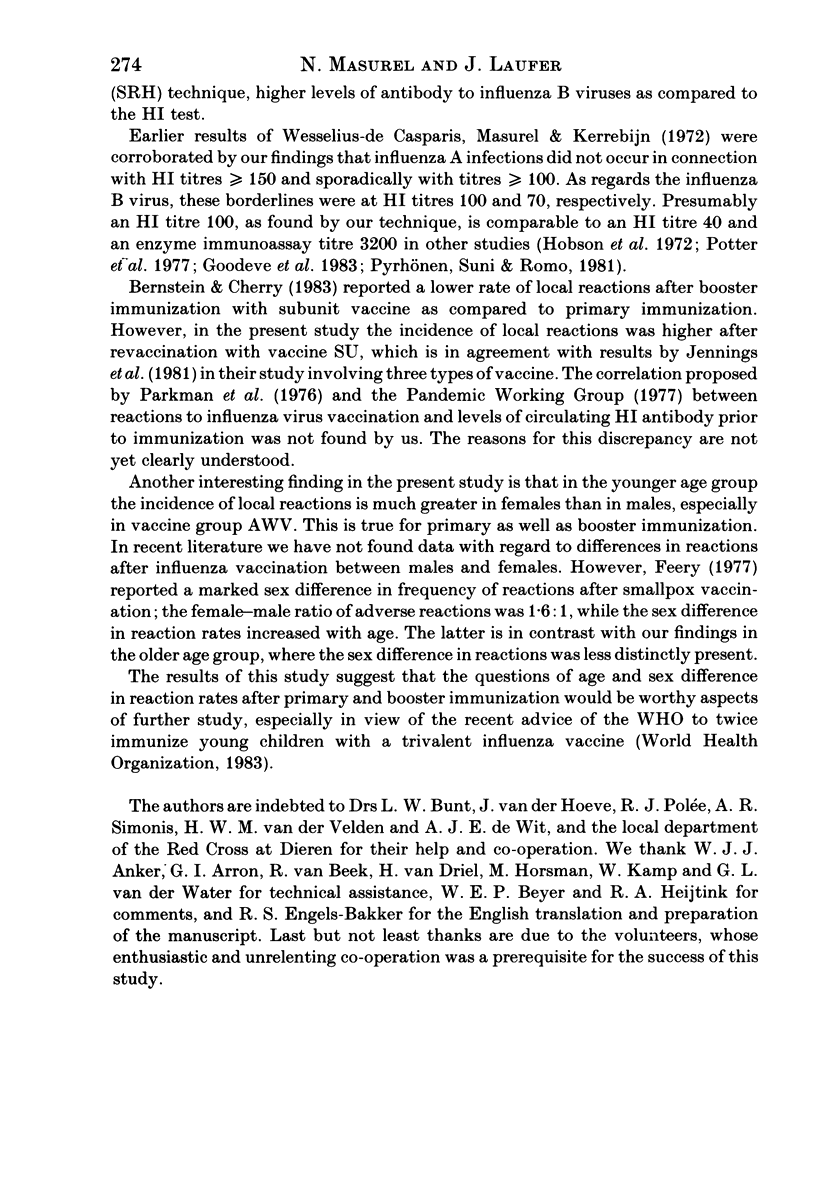
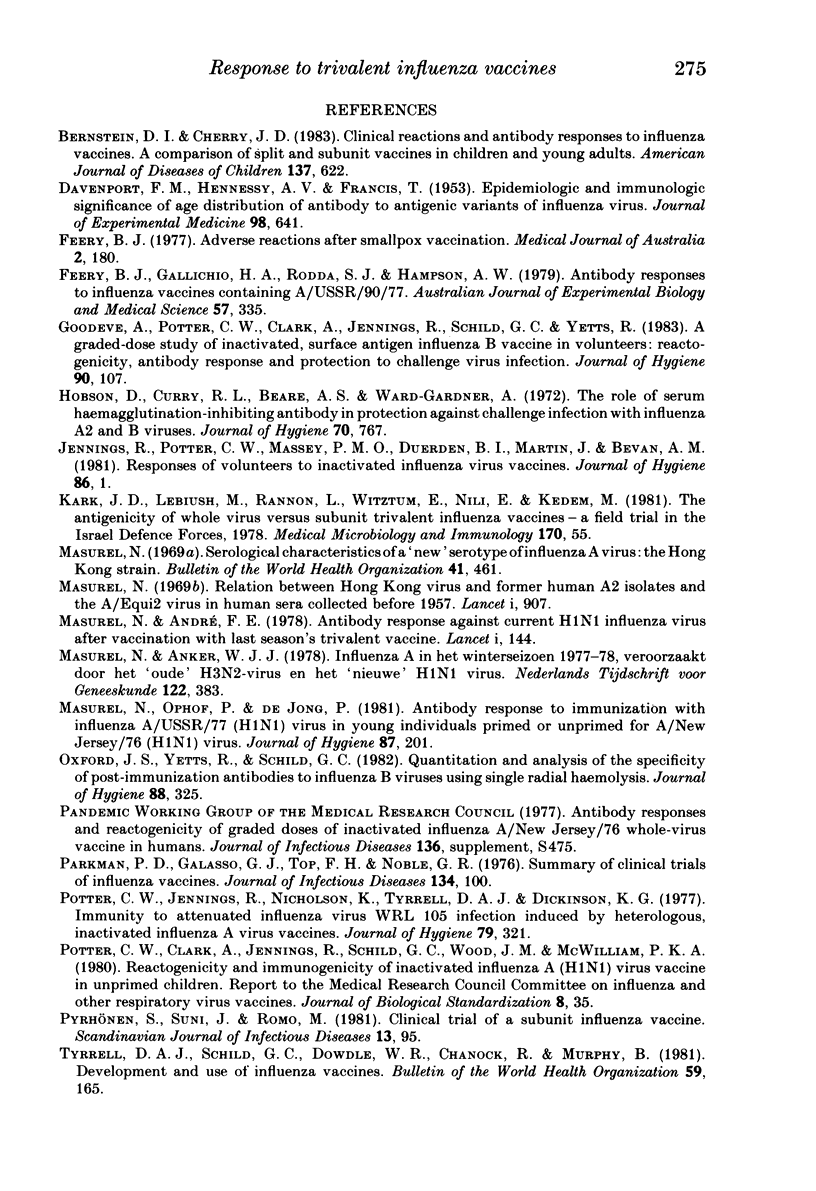
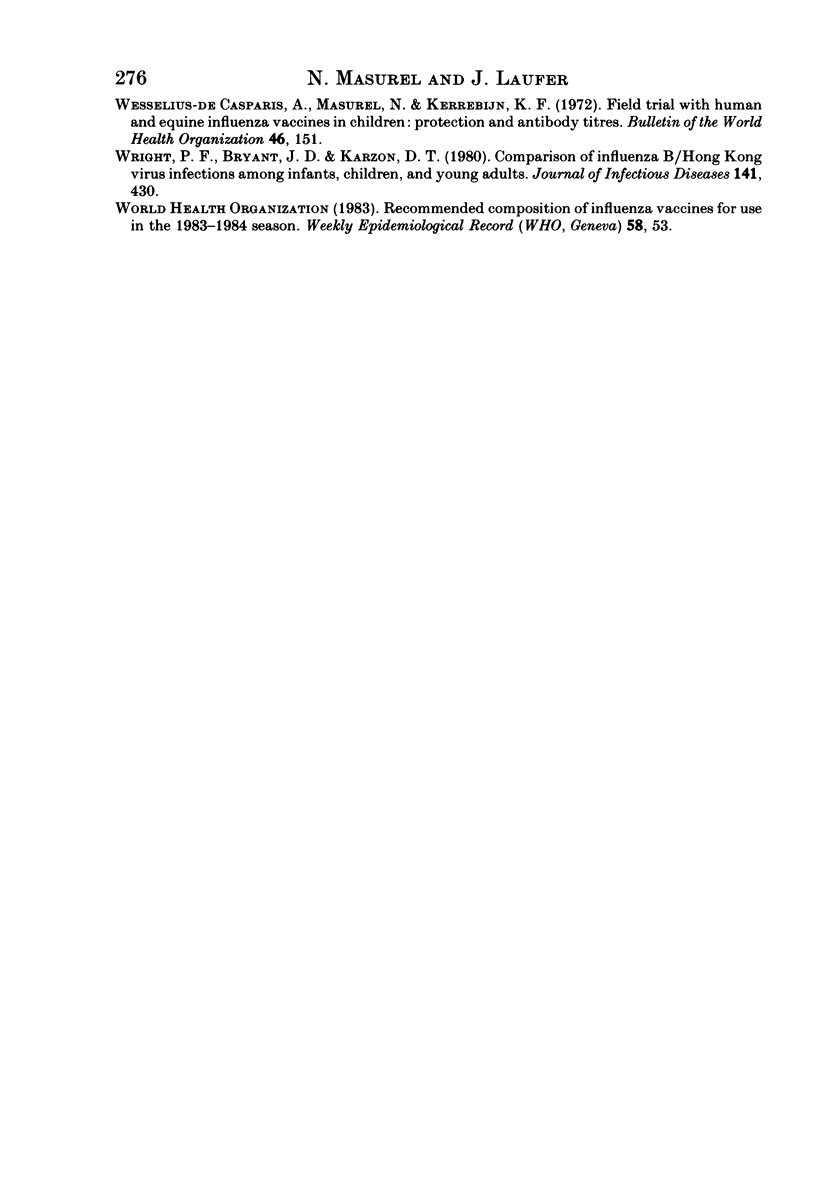
Selected References
These references are in PubMed. This may not be the complete list of references from this article.
- Bernstein D. I., Cherry J. D. Clinical reactions and antibody responses to influenza vaccines. A comparison of split or subunit vaccines in children and young adults. Am J Dis Child. 1983 Jul;137(7):622–626. doi: 10.1001/archpedi.1983.02140330006003. [DOI] [PubMed] [Google Scholar]
- DAVENPORT F. M., HENNESSY A. V., FRANCIS T., Jr Epidemiologic and immunologic significance of age distribution of antibody to antigenic variants of influenza virus. J Exp Med. 1953 Dec;98(6):641–656. doi: 10.1084/jem.98.6.641. [DOI] [PMC free article] [PubMed] [Google Scholar]
- Feery B. J. Adverse reactions after smallpox vaccination. Med J Aust. 1977 Aug 6;2(6):180–183. doi: 10.5694/j.1326-5377.1977.tb114544.x. [DOI] [PubMed] [Google Scholar]
- Feery B. J., Gallichio H. A., Rodda S. J., Hampson A. W. Antibody responses to influenza vaccines containing A/USSR/90/77. Aust J Exp Biol Med Sci. 1979 Jun;57(3):335–344. doi: 10.1038/icb.1979.36. [DOI] [PubMed] [Google Scholar]
- Goodeve A., Potter C. W., Clark A., Jennings R., Schild G. C., Yetts R. A graded-dose study of inactivated, surface antigen influenza B vaccine in volunteers: reactogenicity, antibody response and protection to challenge virus infection. J Hyg (Lond) 1983 Feb;90(1):107–115. doi: 10.1017/s0022172400063907. [DOI] [PMC free article] [PubMed] [Google Scholar]
- Hobson D., Curry R. L., Beare A. S., Ward-Gardner A. The role of serum haemagglutination-inhibiting antibody in protection against challenge infection with influenza A2 and B viruses. J Hyg (Lond) 1972 Dec;70(4):767–777. doi: 10.1017/s0022172400022610. [DOI] [PMC free article] [PubMed] [Google Scholar]
- Jennings R., Potter C. W., Massey P. M., Duerden B. I., Martin J., Bevan A. M. Responses of volunteers to inactivated influenza virus vaccines. J Hyg (Lond) 1981 Feb;86(1):1–16. doi: 10.1017/s0022172400068698. [DOI] [PMC free article] [PubMed] [Google Scholar]
- Kark J. D., Lebiush M., Rannon L., Witztum E., Nili E., Kedem R. The antigenicity of whole virus versus subunit trivalent influenza vaccines -- a field trial in the Israel Defence Forces, 1978. Med Microbiol Immunol. 1981;170(1):55–62. doi: 10.1007/BF02123797. [DOI] [PubMed] [Google Scholar]
- Masurel N., André F. E. Antibody response against current H1N1 influenza virus after vaccination with last season's trivanent vaccine. Lancet. 1978 Jan 21;1(8056):144–145. doi: 10.1016/s0140-6736(78)90438-5. [DOI] [PubMed] [Google Scholar]
- Masurel N., Anker W. J. Influenza A in het winterseizoen 1977-78, veroorzaakt door het "oude" H3N2-virus en het "nieuwe" H1N1-virus. Ned Tijdschr Geneeskd. 1978 Mar 18;122(11):383–384. [PubMed] [Google Scholar]
- Masurel N., Ophof P., de Jong P. Antibody response to immunization with influenza A/USSR/77 (H1N1) virus in young individuals primed or unprimed for A/New Jersey/76 (H1N1) virus. J Hyg (Lond) 1981 Oct;87(2):201–209. doi: 10.1017/s0022172400069412. [DOI] [PMC free article] [PubMed] [Google Scholar]
- Masurel N. Relation between Hong Kong virus and former human A2 isolates and the A-EQU12 virus in human sera collected before 1957. Lancet. 1969 May 3;1(7601):907–910. doi: 10.1016/s0140-6736(69)92544-6. [DOI] [PubMed] [Google Scholar]
- Masurel N. Serological characteristics of a "new" serotype of influenza A virus: the Hong Kong strain. Bull World Health Organ. 1969;41(3):461–468. [PMC free article] [PubMed] [Google Scholar]
- Oxford J. S., Yetts R., Schild G. C. Quantitation and analysis of the specificity of post-immunization antibodies to influenza B viruses using single radial haemolysis. J Hyg (Lond) 1982 Apr;88(2):325–333. doi: 10.1017/s0022172400070170. [DOI] [PMC free article] [PubMed] [Google Scholar]
- Potter C. W., Clark A., Jennings R., Schild G. C., Wood J. M., McWilliams P. K. Reactogenicity and immunogenicity of inactivated influenza A (H1N1) virus vaccine in unprimed children. Report to the Medical Research Council Committee on influenza and other respiratory virus vaccines. J Biol Stand. 1980;8(1):35–48. doi: 10.1016/s0092-1157(80)80045-x. [DOI] [PubMed] [Google Scholar]
- Potter C. W., Jennings R., Nicholson K., Tyrrell D. A., Dickinson K. G. Immunity to attenuated influenza virus WRL 105 infection induced by heterologous, inactivated influenza A virus vaccines. J Hyg (Lond) 1977 Dec;79(3):321–332. doi: 10.1017/s0022172400053158. [DOI] [PMC free article] [PubMed] [Google Scholar]
- Pyrhönen S., Suni J., Romo M. Clinical trial of a subunit influenza vaccine. Scand J Infect Dis. 1981;13(2):95–99. doi: 10.3109/inf.1981.13.issue-2.03. [DOI] [PubMed] [Google Scholar]
- Wesselius-de Casparis A., Masurel N., Kerrebijn K. F. Field trial with human and equine influenza vaccines in children: protection and antibody titres. Bull World Health Organ. 1972;46(2):151–157. [PMC free article] [PubMed] [Google Scholar]
- Wright P. F., Bryant J. D., Karzon D. T. Comparison of influenza B/Hong Kong virus infections among infants, children, and young adults. J Infect Dis. 1980 Apr;141(4):430–435. doi: 10.1093/infdis/141.4.430. [DOI] [PubMed] [Google Scholar]


